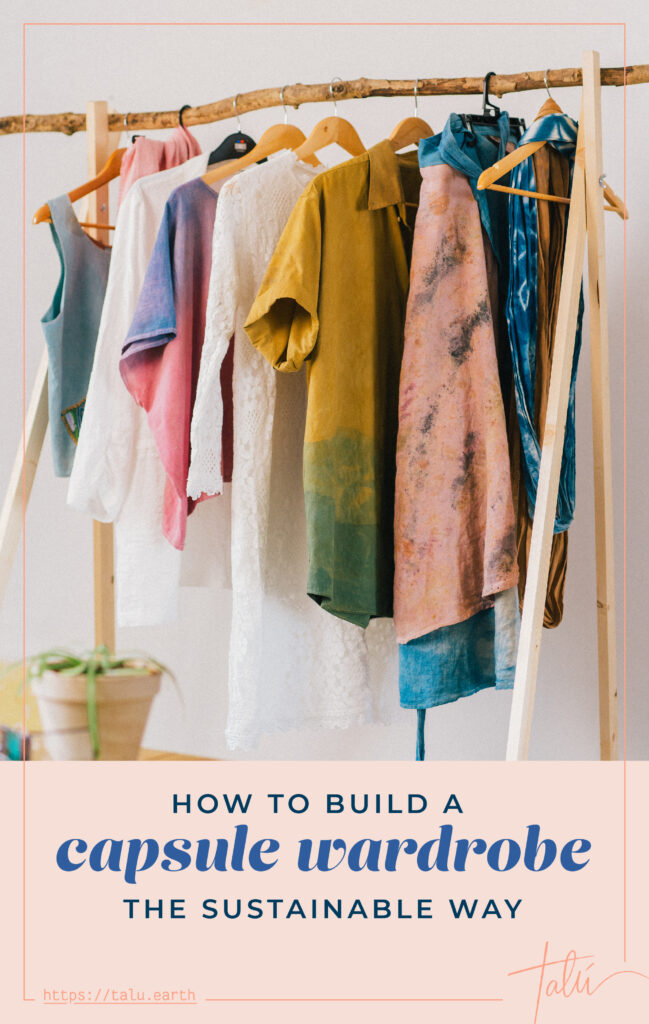Taking notice of our impact on this Earth is the first step towards correcting the damage done.
Regardless of where you are on your journey towards co-existing with the planet in a more sustainable way, all of us started at the beginning: uninformed. Learning how to build a capsule wardrobe is just one step towards mending our relationship with consumption.
As many of us are well aware, the system of fast fashion that’s currently in place has resulted in millions of tonnes of clothing waste per year, not to mention the environmental damages and worker mistreatment in the factories themselves.
Humans got used to overconsumption before we were aware of the true toll it was taking, and now many of us are beginning our individual journeys to slow down and become part of the Earth’s life cycle in a more sustainable way.
This is where the idea of capsule wardrobes, which are limited closets of versatile, high-quality clothing, emerged.
The goal is to play with the clothing you own in different ways, forcing yourself to create new combinations, take care of your pieces, and become more creative and inspired in the process.
To quote one of my all-time favourite books:
“A simple wardrobe allows you to invest in fewer, high-quality items that are well designed to meet your actual needs. When you slow down your rate of consumption, it is also possible to take the time to develop your own garments through sewing, knitting, visible mending, or felting.” – Fibershed.
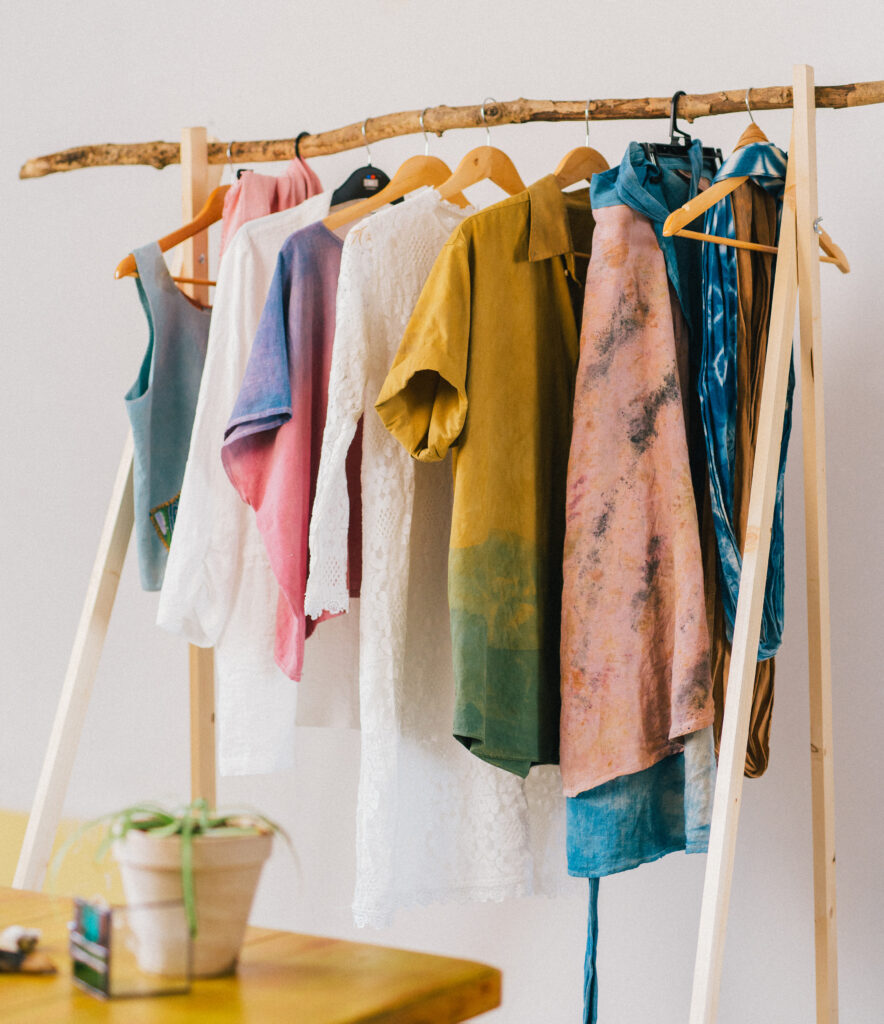
Declutter your closet and keep only what you love.
The first step of creating your own capsule wardrobe is to take stock of everything you already have! After all, the most sustainable closet is the one you already own. The key word here is “simplicity”.
High-quality fabrics that last will be the keys to your new minimalist wardrobe. Sentimental or signature items can stay as well.
Clothing that doesn’t fit the way you want is in colours you’ve never loved, or is disintegrating due to poor quality can go. How it goes is another story entirely. We’ll get into that later.
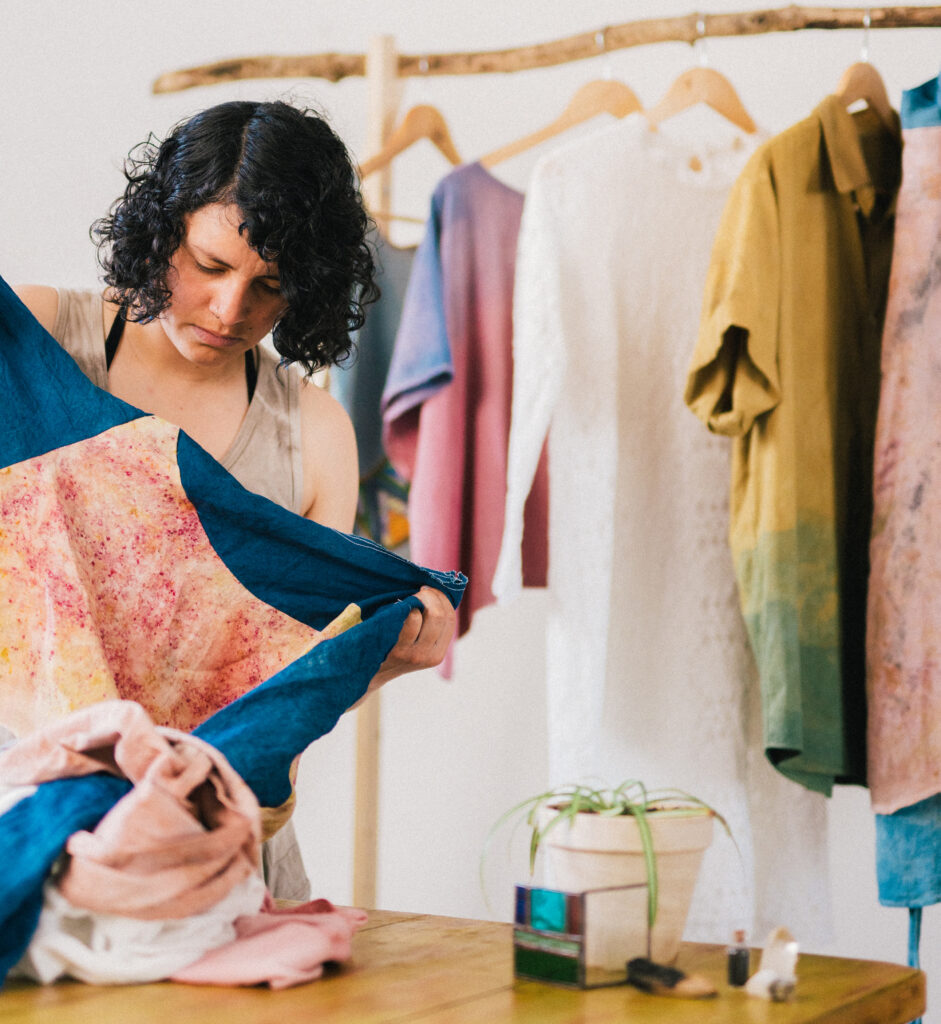
Create a capsule wardrobe checklist of the clothing you envision your ideal self in.
This is the time to be free with your wants and goals. List what you will realistically need, and what will bring you joy.
Cold climates might need turtlenecks, jumpers, and good boots. Warmer weather requires sleeveless shirts and high-quality shorts. You may need a capsule wardrobe for work to seamlessly overlap with the rest of your items, which takes careful planning.
Be honest with yourself, and let your creativity blossom.
In this step, it’s most helpful to create your ideal list with colours, fabrics, and “use cases” (for example, “I’ll wear this when it’s raining”).
Pinterest and photo collages can also be helpful! Anything that works for you.
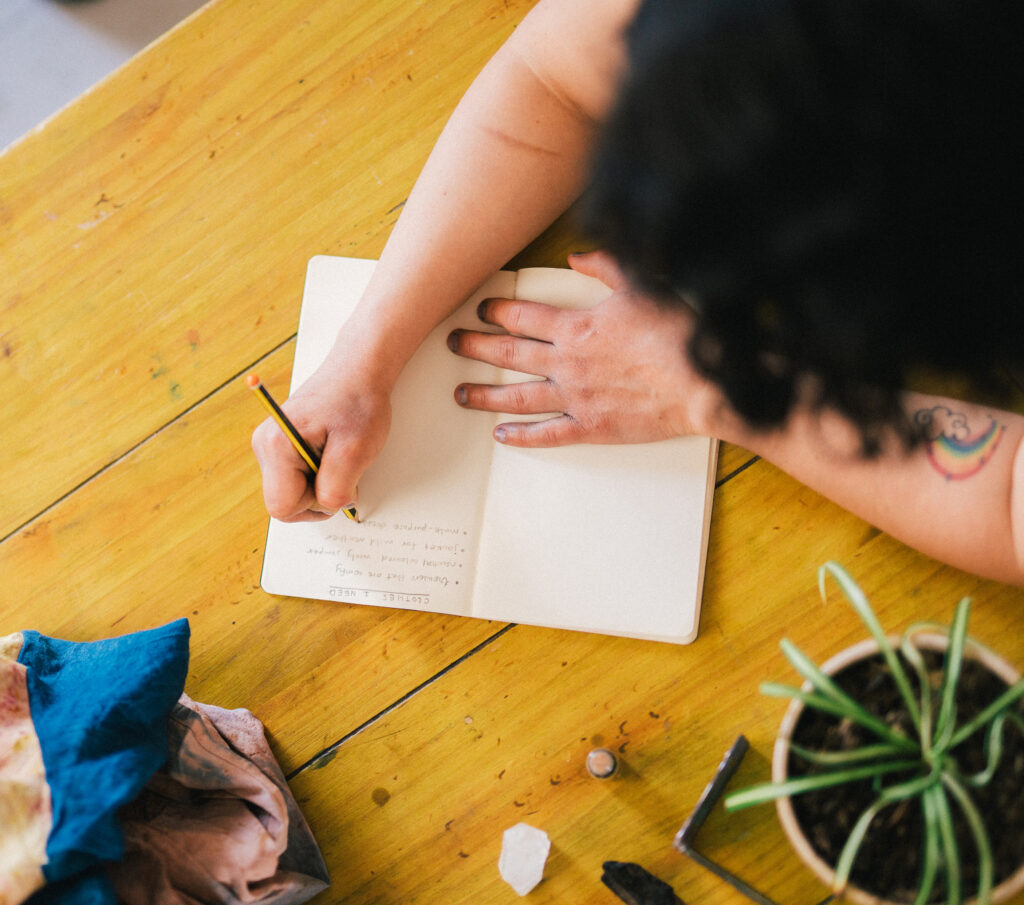
It’s time to come back down to earth: define your budget.
Mindless consumption is what got us into this mess, and mindful consumption is what gets us out. But that means you have to know your budget for new clothing – no spending on a whim.
Sustainable, ethically sourced textiles and clothing will be more expensive than fast fashion. If it isn’t, dig a little deeper – someone isn’t being truthful.
The cost of sustainable clothing comes from paying workers fairly, taking the time to create well-made pieces, adhering to environmental regulations, creating colours with non-toxic natural dyes, and all other conscious choices that go into ethical clothing.
So, you’ll have to keep the extra cost in mind when you create your budget.
Find brands or individual clothing makers whose items you love, and choose the pieces that will bring you the most use and joy.
In the end, you will spend no more than someone constantly buying cheap clothing, which lasts only a few months.
You’ll enjoy a carefully curated, completely ethical wardrobe – and look fantastic while doing it!
Let go of the old, mindfully and purposefully, to complete the circle of sustainability.
You may have learned how to create a capsule wardrobe and filled your closet with pieces you love, but your journey isn’t over yet.
If you can avoid it, don’t let your old clothing go to the landfill.
Purging your closet only to purchase an entirely new wardrobe is not as sustainable as it might feel when you see all your new minimal pieces.
Fortunately, I’m here to share about true sustainability. There’s a way forward, and many options when it comes to getting rid of unloved clothing.
You can sell or repurpose your used clothing – some favourites are stuffing pillowcases or pet beds with scraps, repurposing fabrics for new projects, or breaking clothing down into cleaning rags.
The more crafty among us may enjoy more labour-intensive repurposing projects, like making rag rugs. Donating is also an option, but keep in mind that it comes with issues of its own.
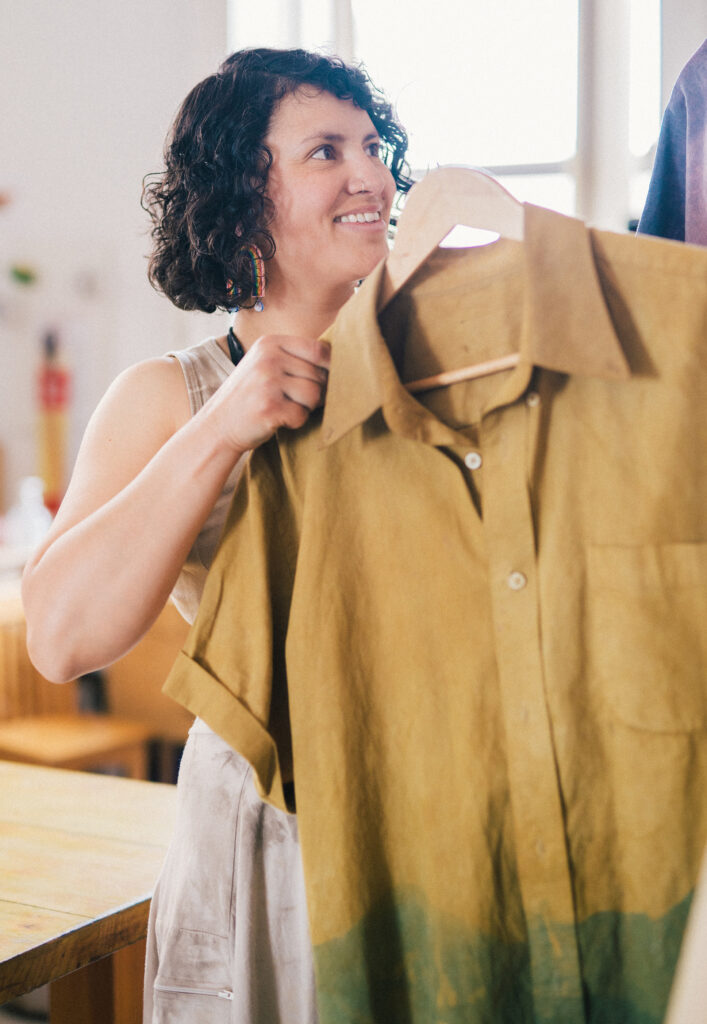
Clothing donation isn’t the one-stop-shop to sustainability that it’s been made to seem – low-quality items are often never re-used, and are sent to other countries in bulk whether they want them or not. Then, they end up in the landfill anyway (you can read about this issue in Ghana in Linton Besser’s article Dead White Man’s Clothes).
If you do donate your clothing, make sure it’s clothing that you would want to buy yourself quality-wise. No holes, no stains, and no rips – otherwise it’s better off being repurposed or recycled.
My area of expertise is in another realm: creating naturally dyed textiles for upcycling or creating new clothes.
Creating new textiles from the old is a passion that comes from an obsession with colours, the environment, and creating things with my hands. I’d love for you to join me!
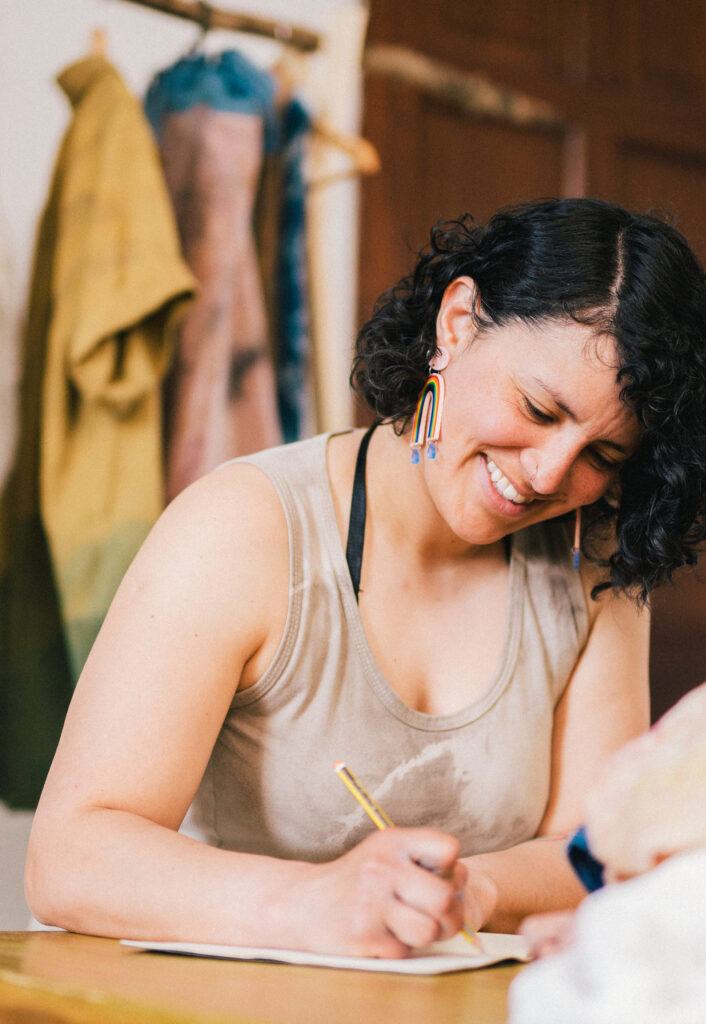
Learning how to build a capsule wardrobe is only the first step.
Changing your habits is how you begin to make a positive impact on the world, and educating yourself on how to do so is a wonderful start.
Capsule wardrobes are one piece of the mindful consumption puzzle, and there are many steps yet to take – but you’re on your way!
If you’re interested in learning more about how to build your sustainable wardrobe, check out my free guide about how to build your capsule wardrobe below.
Pin this post!
